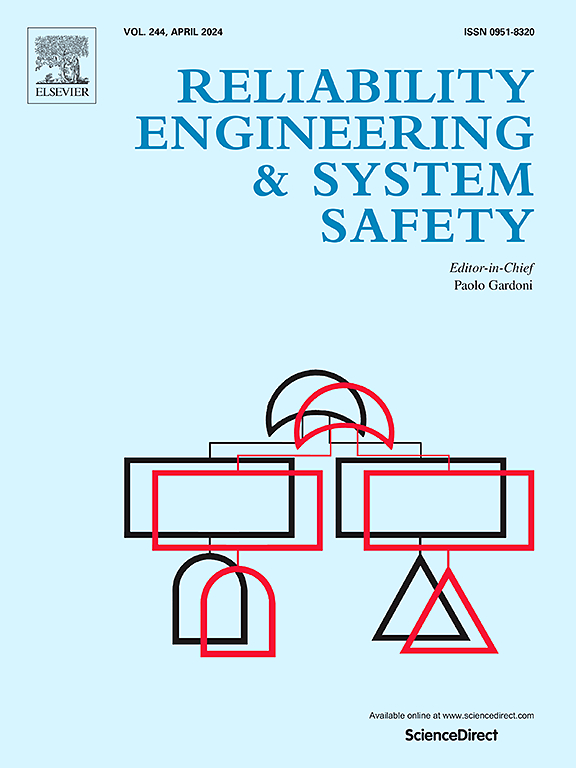API 5L钢管道受腐蚀的先进统计分析和系统可靠性评估
IF 9.4
1区 工程技术
Q1 ENGINEERING, INDUSTRIAL
引用次数: 0
摘要
需要注意的是,通过统计整合整个管道长度的腐蚀特征来制定维护和维修策略,最终会产生整条管道的单一故障概率,这可能会模糊单个管段的不同统计行为。由于管道不同段的腐蚀剖面在统计上是相关的,因此一段的失效会影响相邻的段,这就决定了整个系统的可靠性。在本研究中,使用失效评估图(FAD)估计腐蚀管道的剩余强度。通过综合统计分析,确定了故障场景中各随机变量的典型概率密度函数及其标准差和典型相关系数。将蒙特卡罗模拟(MCS)与SINTAP程序相结合,构建了概率FAD。敏感性分析揭示了各变量对管道剩余强度的相对影响,强调了缺陷深度与壁厚之间的强交互作用。此外,还评估了操作压力和腐蚀缺陷深度变化系数的综合影响,以了解它们对失效概率的影响。此外,系统可靠性评估允许更精确的风险管理,避免将整个管道视为单个单元而产生的过于保守或乐观的估计。此外,所开发的全局系统可靠性程序可用于制定最优和更准确的检查和维护计划。本文章由计算机程序翻译,如有差异,请以英文原文为准。
Advanced statistical analysis and system reliability assessment of API 5L steel pipelines subjected to corrosion attack
It is crucial to note that developing a maintenance and repair strategy by statistically consolidating the corrosion features across the pipeline length ultimately yields a single probability of failure for the entire line, potentially obscuring the distinct statistical behavior of individual pipe segments. Since the corrosion profiles in different segments of the pipeline are statistically correlated, failure in one section can affect neighboring sections, which defines the overall system reliability. In this study, the remaining strength of a corroded pipeline was estimated using the Failure Assessment Diagram (FAD). A comprehensive statistical analysis identified the typical probability density functions of all random variables in the failure scenario, as well as their standard deviations and typical correlation coefficients. A Monte Carlo simulation (MCS) was integrated with the SINTAP procedure to construct a probabilistic FAD. Sensitivity analysis revealed the relative influence of each variable on the pipeline’s remaining strength, emphasizing a strong interaction between defect depth and wall thickness. Additionally, the combined effect of the operating pressure and the coefficient of variation of the corrosion defect depth was evaluated to understand their influence on the probability of failure. Furthermore, system reliability assessment allows for more precise risk management, avoiding overly conservative or optimistic estimates that might arise from treating the entire pipeline as a single unit. Besides, the developed procedure for global system reliability can be used to devise optimal and more accurate inspection and maintenance schedules.
求助全文
通过发布文献求助,成功后即可免费获取论文全文。
去求助
来源期刊

Reliability Engineering & System Safety
管理科学-工程:工业
CiteScore
15.20
自引率
39.50%
发文量
621
审稿时长
67 days
期刊介绍:
Elsevier publishes Reliability Engineering & System Safety in association with the European Safety and Reliability Association and the Safety Engineering and Risk Analysis Division. The international journal is devoted to developing and applying methods to enhance the safety and reliability of complex technological systems, like nuclear power plants, chemical plants, hazardous waste facilities, space systems, offshore and maritime systems, transportation systems, constructed infrastructure, and manufacturing plants. The journal normally publishes only articles that involve the analysis of substantive problems related to the reliability of complex systems or present techniques and/or theoretical results that have a discernable relationship to the solution of such problems. An important aim is to balance academic material and practical applications.
 求助内容:
求助内容: 应助结果提醒方式:
应助结果提醒方式:


